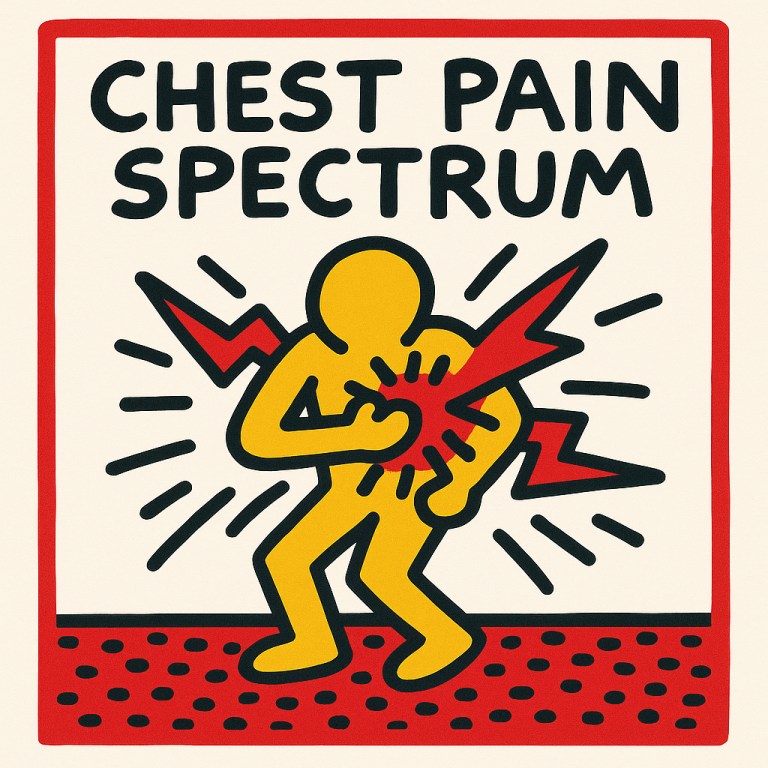
Scenario 1A: Mild Chest Pain / Anxiety vs Cardiac Origin
You are the attending clinician on a double EMT crew. Your shift has just begun and you are dispatched to a 54-year-old male reporting chest discomfort. The call was made by the patient himself, who sounds calm on the phone. He is waiting at home in a seated position.
You are the attending clinician on a double EMT crew. Your shift has just begun and you are dispatched to a 54-year-old male reporting chest discomfort. The call was made by the patient himself, who sounds calm on the phone. He is waiting at home in a seated position.
Section 1: Arrival and First Impressions
You arrive to find the patient sitting on the edge of his bed. He greets you with a smile but appears slightly flushed. He reports mild chest pain described as a 'tightness' that started about an hour ago while he was reading in bed. He denies shortness of breath, nausea, or radiation of pain.
Initial observations:
- - Airway: Patent
- - Breathing: RR 18, SpO₂ 97% RA
- - Circulation: HR 84 regular, BP 138/86, cap refill <2s
- - Disability: GCS 15
- - Exposure: No rash or visible trauma
Section 2: Patient History
The patient has a history of mild hypertension for which he takes amlodipine. He does not smoke, drinks occasionally, and has no known drug allergies. He admits he’s been under stress at work and occasionally experiences similar discomfort during periods of anxiety.
Section 3: ECG and Clinical Decision-Making
A 12-lead ECG is performed and shows normal sinus rhythm with no ST elevation or depression, no pathological Q waves or T wave inversion.
Questions for reflection:
- 1. What features in the patient’s presentation might suggest a non-cardiac cause of chest pain?
- 2. What red flags would prompt immediate transport to a HAC?
- 3. What advice or treatment would you consider appropriate if this were anxiety-related?
Section 4: Reflection and Documentation
Document your clinical impression and reasoning for either conveying the patient or leaving them at home with safety netting advice.
Describe how you would explain your decision to the patient and how you would handle any uncertainty they might feel.